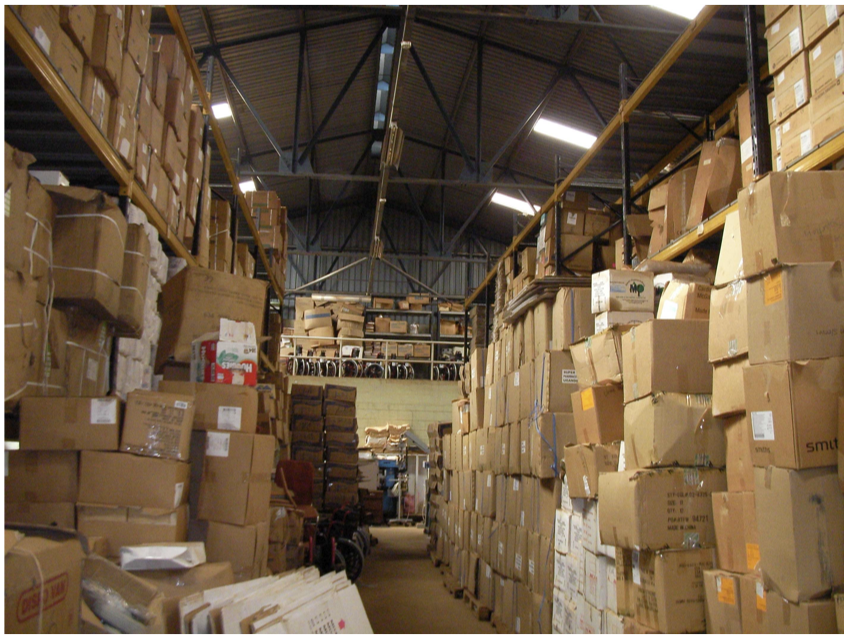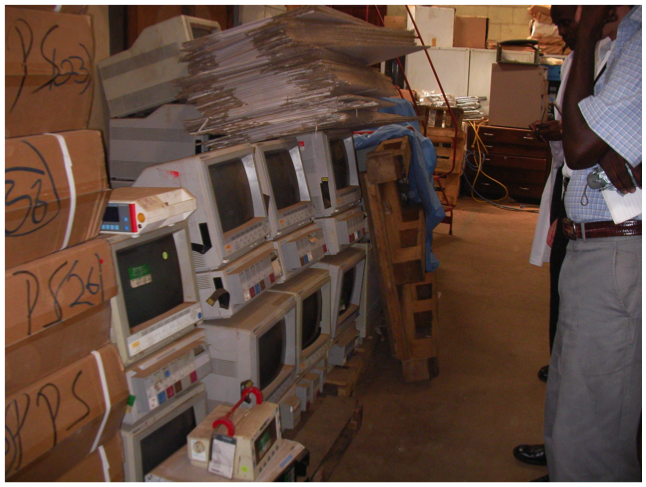The Equipment Graveyard
Lifebox Trustee Angela Enright and Dr Aigeeleng are old friends – they like to catch up and pose for photos
This isn’t quite as morbid as it sounds, but it’s certainly depressing. Harry is talking about equipment graveyards – warehouses, cupboards, row after row of medical devices that are theoretically useful but practically useless in the context of the environment they’ve been sent to.
“There’s no maintenance, so things break down,” Harry explains, of the many devices that could be fully functional if it weren’t for the impossibility of replacing basic spare parts, or calling out a service engineer to a rural hospital on a regular – or even emergency – basis.
Even worse than those items made redundant in action are those that never had a chance to serve.
“There are those devices that are donates – but some part is missing, or they didn’t come with an instruction booklet – or the booklet is in a foreign language…” he shakes his head.
Look at the pictures, and it’s shocking to see what these graveyards equate to in wasted value and opportunity – and what a disconnect in communication they memorialize.
This is Jimmy, a nurse anaesthetist in Uganda.
He was photographed by Dr Louise Finch, a member of our UK faculty running the Lifebox training programme in Mbarara, Uganda last summer. From September, Louise spent three months traveling the country to follow up on the 80 donated oximeters (an adventure that deserves many and more blog posts of its own, so stay tuned!) and met up with him at his hospital.
He’s standing proudly next to an anaesthesia machine, which he keeps in pristine condition despite the ubiquitous red Ugandan dust. It makes a very useful table for his Lifebox oximeter, but not much more. All of the dials are in Italian.
We conceived the Lifebox pulse oximeter for a long life three feet above ground (about the height of an operating table). It doesn’t need servicing or recalibrating; it is compatible with generic probes, so it’s much more likely that you can find a replacement for it; and it runs on rechargeable batteries so that you can continue to use it if the power cuts out during an operation.
There are a lot of organizations that aim to keep equipment mortality low. One part of Global Partners in Anesthesia and Surgery (GPAS)’s work focuses on improving service and education infrastructure. Engineering World Health sends biomedical engineers to low-resource countries to teach and train locally. Powerfree Education Technology (PET) aims to develop fit-for-purpose medical technologies to improve maternal healthcare. And our own WFSA offers guidelines and assistance to hospitals, so that they can question manufacturers directly about the suitability of equipment.
“If people have monitors, they work them till they are dead,” says Harry. They don’t need expensive and misplaced wallflowers – they need equipment that will work to last, as long and as hard as they do.



